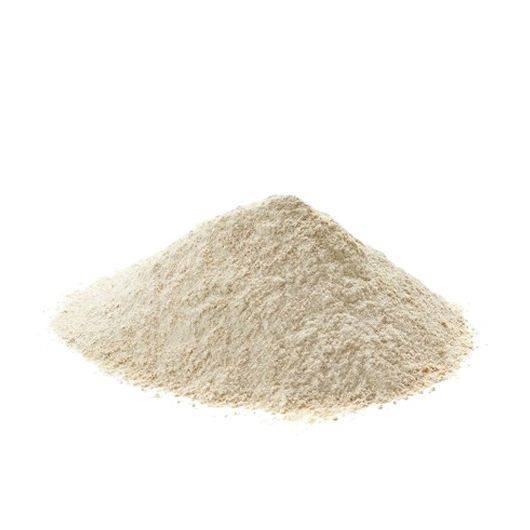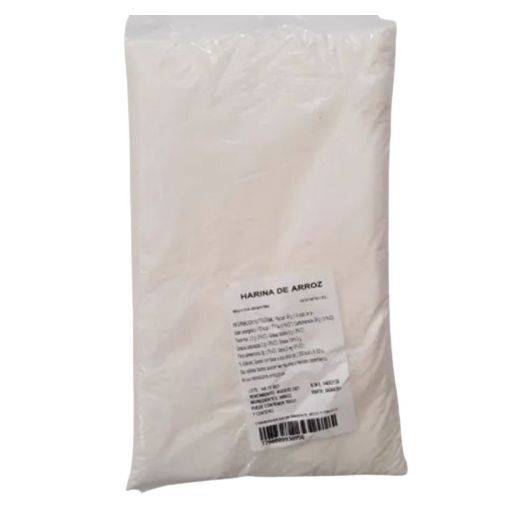
- > Worldwide
- > On-time delivery guarantee
- > To be negotiated
- > Visa and MasterCard
- > PayPal
- > Bank transfers
- > Manufacturers, suppliers and exporters from Latin America
- > Best prices
- > Variety of brands and products
- Natural Fresh Rice Flour.
- Domestical and Industrial use.
- Bulk container For chefs, commercial kitchens & family houses. Branded bags, bulk bags, truck-load sized orders.
- Packed fresh To lock in freshness. We keep a close eye on the supply chain, from growing to delivery, to ensure that each product meets our high-quality standards and your requirements.
- Satisfaction guarantee We stand by our products and our customers. If you are unsatisfied with your order, reach out to use and we'll offer you a solution.
Rice flour is a very common ingredient nowadays. So common that practically all of us have consumed it even if it has been without knowing it, the applications of rice flour that make this an indispensable ingredient for the food industry and a widely used element in domestic cooking.
Rice flour is the result of the milling of the healthy and clean grain of this cereal, resulting in a change in its physical properties that give it new uses and applications, but maintaining the same nutritional characteristics as those of the rice from which it is obtained. These nutritional properties of rice (and consequently also of flour) have made this cereal a basic element in world food being the second most cultivated (after wheat). According to the FAO, 747 million tons were produced in 2013, figures that reflect the importance of rice in the human diet. Of the 180 million hectares of rice cultivation in the world, only 475,000 are in the European Union, with Spain taking the second place in this European ranking.
Serving Size: 50 g
Nutritional information
Energy Value: 176 kcal = 739 kJ.
Carbohydrates: 39 g.
Protein: 5 g.
Total Fats: 0 g.
Saturated Fats: 0 g.
Trans fats: 0 g.
Dietary Fiber: 1 g.
Sodium: 10 mg.
HOW IS IT OBTAINED?
To produce flour is to grind but it is not only that. The raw material is received until it is packaged, the product does not have direct contact with the operator, thus avoiding possible alterations. In addition, critical points are identified in the production chain and reviewed in a standardized and periodic way, allowing us to identify possible problems before they occur.
Once the raw material is received, it goes through a series of screenings that ensure its purity. Once this first control has been passed, the rice is ground, going through different processes, screens, classifications and milling that ensure that the product obtained meets the requirements to be considered.
USES AND APPLICATIONS
Rice flour has many uses, both domestically and industrially. It is not only used as part of products intended for food. The cosmetic industry has been using it for a long time as a base for some preparations and as a talc additive (by itself it is already a highly recommended desiccant for sensitive skin). It is also used in soaps and masks being a very appreciated natural exfoliate. It is also part of some preparations for leather tanning.
At the food level, its uses are multiplying and new ones appear every year discovering new properties. Rice flour is one of the basic ingredients for cookies, cakes and breads. Apart from providing many qualities that other flours cannot provide, due to its absence of gluten it is one of the basic components of foods for people with celiac disease or sensitive to gluten. It has been used since time immemorial to make tempuras and batter, given its poor ability to absorb oil. That results in a crispy outer layer and much less caloric than the equivalent with wheat flour.
Recently, in 2002, a group of Swedish scientists discovered the appearance of high amounts of acrylamide in carbohydrate-rich foods when cooked at high temperatures. Everything indicates that acrylamide could be an important carcinogen and there are many scientific initiatives investigating the topic. The ARS chemist Fred F. Shih and his team determined that the amount of acrylamide could be reduced by 60% by changing wheat flour to rice flour in samples that underwent a certain frying time. So making tempura or batter with rice flour, apart from all the organoleptic properties it confers, is much healthier from a medical point of view.
Rice flour is also used as a spreading agent. An extender agent is a product that is used to replace one part of another without thereby impairing the nutritional qualities of the final result. Thus, rice flour is used as an extender, for example in the meat industry. Although possibly its most well-known quality in the industry is its ability to thicken sauces, meat preparations, chocolates, dissolvable, etc. Thus, both in the domestic kitchen and in the food industry, it is widely used as a natural gluten-free thickener. A thickening agent is one that manages to increase the viscosity of a product without significantly changing both the taste and the other properties.
Its exceptional nutritional properties has made child nutrition specialists have included rice flour in many breakfast cereals, porridge and other foods for the little ones. Of course it is also part of many of the cereal preparations for adults. It is also used in the preparation of snacks and snacks, as a base ingredient, which mixed with other cereals and then extruded, give rise to pasta for frying. In this same industry it is also used to achieve the adhesion of salt to pipes.
In beverages and foods in liquid state it is sometimes used as the main ingredient thereof and at other times as a stabilizing agent. A stabilizing agent is one that manages to mix ingredients that would not do it naturally or that after a while would separate. There are many stabilizers but rice flour appears as a very interesting option because it is natural and gluten-free.
Rice flour is also capable of achieving the absence of caking or sticking of some foods. Thus, its use is well known so that the dough does not stick to molds or surfaces, but it is not so much that, for example, the much appreciated dried figs manage not to clump together thanks to rice flour.
- Yes
No reviews found







